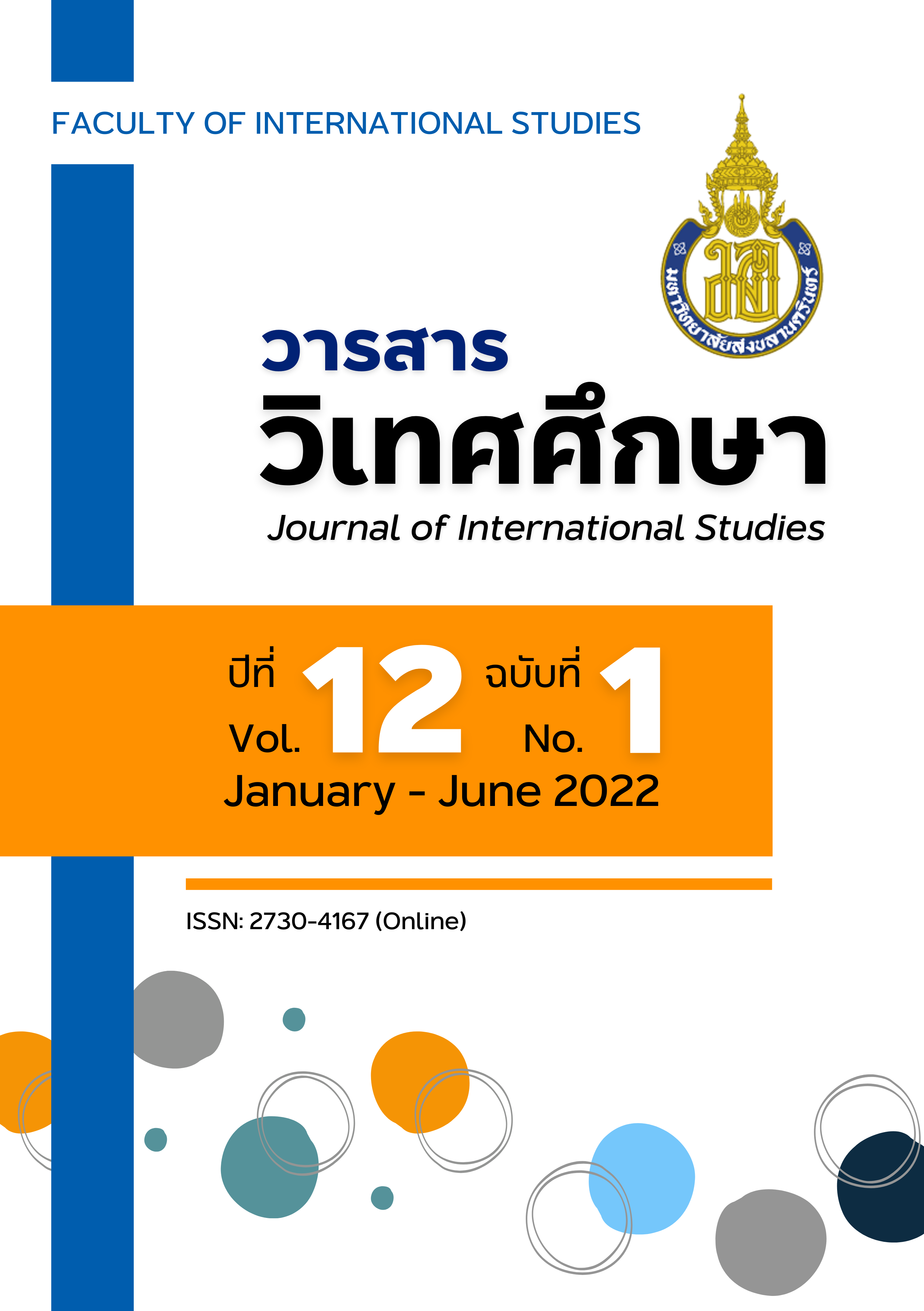Quality Standard Assessment and Determining the Strategy of Dream World Park
Main Article Content
Abstract
The purpose of this qualitative research was to assess the quality of standards for recreational attractions, analyzing SWOT analysis, formulation of strategies for improving the Dream World Park's operational efficiency using TOWS matrix. Fieldwork surveys, focus groups, and in-depth interviews were used to gather data. Data were analyzed using thematic analysis. The 45 samples included Thai tourists, tourism scholars, and Dream World Park’s staffs. According to the findings of the study, Dream World Park passed all the required scorecards at excellent levels when evaluating all three primary components when assessing the quality standards for recreational attractions. Among the strategies for improving operational efficiency were the proactive strategy of developing theme park tourism marketing, the preventive strategy of improving management to reduce costs and support the future situation, the modified strategy of improving the tourism image, and the passive strategy of preparing the world change plan.
Article Details

This work is licensed under a Creative Commons Attribution-NonCommercial-NoDerivatives 4.0 International License.
Statements and opinions expressed in articles herein are those of the authors and do not necessarily reflect the position of the editors or publisher.
Article, information, text, image, etc. which are published in Journal of International Studies, belong to Journal of International Studies. If anybody or any organization would like to use part or whole of them, they must receive written permission from Journal of International Studies before usage.
References
กรมการท่องเที่ยว. (2557). คู่มือการตรวจประเมินมาตรฐานคุณภาพแหล่งท่องเที่ยวเพื่อนันทนาการ. พิมพ์ครั้งที่ 2. กรุงเทพฯ: กระทรวงท่องเที่ยวและกีฬา.
กอบกาญจน์ วัฒนวรางกูร, (2558). ท่องเที่ยวชุมชนไทย มั่นคง มั่งคั่ง ยั่งยืน. ค้นเมื่อ 15 กุมภาพันธ์ 2564, จาก https://
tattourismjournal.files.wordpress.com/2016/01/7_tourism_forum_2016.pdf
การท่องเที่ยวแห่งประเทศไทย. (2553). The 8th Thailand Tourism Awards 2010. ค้นเมื่อ 11 มกราคม 2564, จาก from:https://www.tourismthailand.org/fileadmin/downloads/others/instruction_Tourism_awards_2010.pdf
การท่องเที่ยวแห่งประเทศไทย. (2562). แผนวิสาหกิจ การท่องเที่ยวแห่งประเทศไทย พ.ศ. 2563-2564 (ฉบับทบทวน พ.ศ. 2563-2564). ค้นเมื่อ 27 มีนาคม 2564, จาก https://bit.ly/2RM6Nm2
กุณฑิญา จิรทิวาธวัช. (2560). ธีมพาร์คในประเทศไทย: พัฒนาการและปัจจัยสู่ความสำเร็จ. 13(2). 269-305.
ณฤทัย กุลทา. (2547). ปัจจัยที่มีผลต่อการท่องเที่ยวภายในประเทศของประชาชน กรุงเทพมหานคร. การค้นคว้าแบบอิสระบริหารธุรกิจมหาบัณฑิต บัณฑิตวิทยาลัย, มหาวิทยาลัยเชียงใหม่.
ทิพวรรณ พุ่มมณี (2561) อุตสาหกรรมการท่องเที่ยว. กรุงเทพฯ: สำนักพิมพ์รามคำแหง.
ยุวเรศ มาซอรี. (2552). แนวทางการพัฒนาแหล่งท่องเที่ยวนันทนาการสวนสนุกดรีมเวิลด์. วิทยานิพนธ์ศิลปศาสตรมหาบัณฑิต บัณฑิตวิทยาลัย, มหาวิทยาลัยนเรศวร.
ลักษณาวดี บุญชู. (2558). โอกาสการค้าการลงทุนใน CLMV ภายหลัง AEC ปี 2558. วารสารสุทธิปริทัศน์, 29(92). 1-20.
สํานักพัฒนาแหล่งท่องเที่ยว. (2552). คู่มือการประเมินมาตรฐานคุณภาพแหล่งท่องเที่ยวเพื่อนันทนาการ. กรุงเทพฯ: กระทรวงท่องเที่ยวและกีฬา.
อนุชิต ทองหุ้มและพัชร์หทัย จารุทวีผลนุกูล. (2563). ส่วนประสมทางการตลาดบริการและคุณภาพการให้บริการที่ส่งผลต่อการตัดสินใจของลูกค้าในการเลือกใช้บริการสวนสนุกดรีมเวิลด์ในจังหวัดปทุมธานี. การประชุมผลงานการวิจัยและวิชาการ นวัตกรรมธุรกิจและการเป็นผู้ประกอบการ (น. 825-850). วิทยาลัยบัณฑิตศึกษาการจัดการ มหาวิทยาลัยขอนแก่น.
Bihu, W., Xi, Y., & Ning D. (2006). China theme park scenic area development situation analysis - based on the national A level scenic spots (points) statistics. Journal of Geography and Geographic Information Science, 22 (1), 89-93.
Brielle, G., & Alison, M. (2015). Stakeholder perspectives of the future of accessible tourism in New Zealand. Journal of Tourism Futures. 1(3), 223-239.
David, F.R. (1999). Strategic Management. New Jersey : Preutice-ttall international.
Milman, A. (2001). The Future of the Theme Park and Attraction Industry: A Management Perspective. Journal of Travel Research, 40(2), 139-147. doi:10.1177/004728750104000204
Peterson, C. and McCarthy, C. (2000). Location Enhancement of Cultural Tourism Destination. The Tourist Review, 55(4), 14 – 22.
Schuckert, M. (2007). Success factors of theme parks – An exploration study. Tourism: An International Interdisciplinary Journal, 55(2), 197-208.

